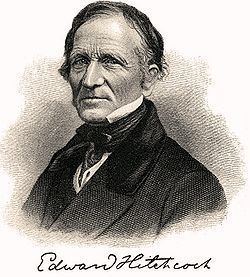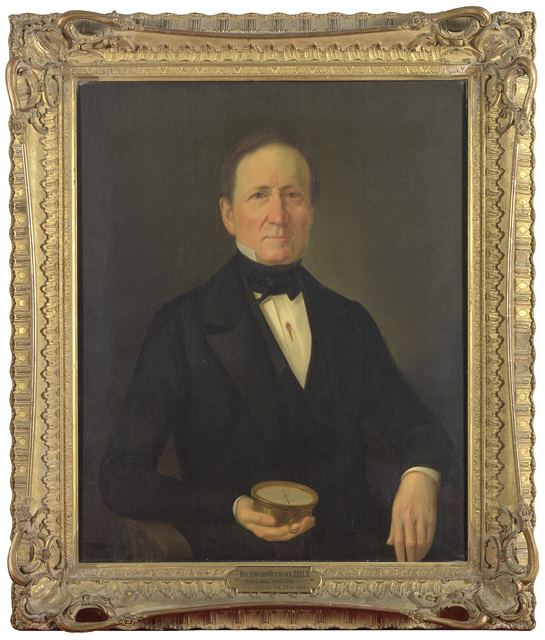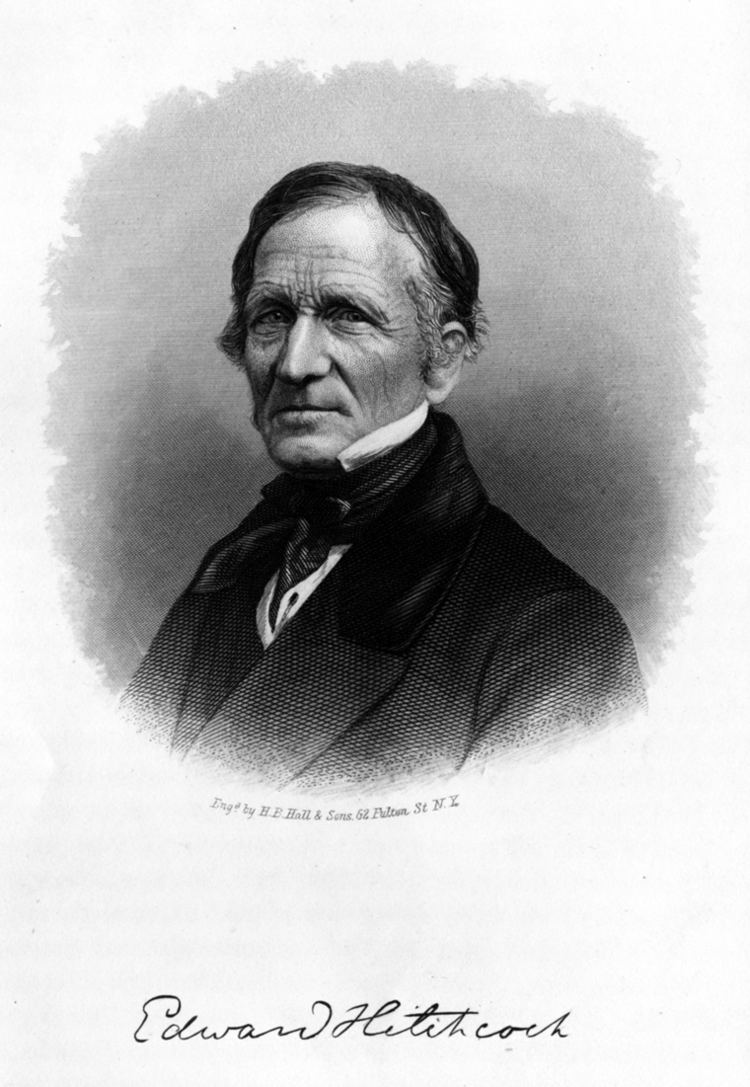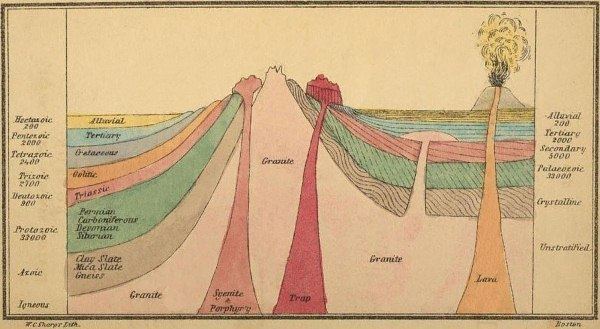Citizenship United States Role Geologist Name Edward Hitchcock Children Charles Henry Hitchcock | ||
 | ||
Books Elementary geology, Ichnology of New England, The religion of geology a, A Catholic Child's First Communi, Elementary Geology by Edwar | ||
Author abbrev. (botany) | ||
Edward Hitchcock's Track Book
Edward Hitchcock (May 24, 1793 – February 27, 1864) was an American geologist and the third President of Amherst College (1845–1854).
Contents
- Edward Hitchcocks Track Book
- Beneski Museum of Natural History Amherst College Massachusetts Travels With Phil
- Life
- Paleontological chart
- Writings
- References

Beneski Museum of Natural History', Amherst College, Massachusetts - Travels With Phil
Life

Born to poor parents, he attended newly founded Deerfield Academy, where he was later principal, from 1815 to 1818. In 1821 he was ordained as a Congregationalist pastor and served as pastor of the Congregational Church in Conway, Massachusetts, 1821-25. He left the ministry to become Professor of Chemistry and Natural History at Amherst College. He held that post from 1825 to 1845, serving as Professor of Natural Theology and Geology from 1845 until his death in 1864. In 1845, Hitchcock became President of the College, a post he held until 1854. As president, Hitchcock was responsible for Amherst's recovery from severe financial difficulties. He is also credited with developing the college's scientific resources and establishing its reputation for scientific teaching.

In addition to his positions at Amherst, Hitchcock was a well-known early geologist. He ran the first geological survey of Massachusetts, and in 1830 was appointed state geologist of Massachusetts (he held the post until 1844). He also played a role in the geological surveys of New York and Vermont. His chief project, however, was natural theology, which attempted to unify and reconcile science and religion, focusing on geology. His major work in this area was The Religion of Geology and Its Connected Sciences (Boston, 1851).

In this book he proposed a long age for the creation, Hitchcock Was a believer in Gap Creationism Hitchcock Was a creationist of the old earth, Randy Moore in More Than Darwin: An Encyclopedia of the People and Places of the Evolution-creationism Controversy in p 168 wrote

Edward Hitchcock was a famous cleric- geologist, Hitchcock, who was America's leading advocate of catastrophism based gap creationism
He was elected a Fellow of the American Academy of Arts and Sciences in 1834.
Hitchcock left his mark in paleontology. He published papers on fossilized tracks in the Connecticut Valley, including Eubrontes and Otozoum, that were later associated with dinosaurs, though he believed, with a certain prescience, that they were made by gigantic ancient birds (ironically, he was arguably technically correct in hindsight, as birds are generally regarded as dinosaurs nowadays). In the Hitchcock Ichnological Cabinet he established a remarkable collection of fossil footmarks. His son, Edward "Doc" Hitchcock, named one of the earliest dinosaurs discovered in North America and the United States, Megadactylus polyzelus. Later it was reclassified as the type specimen of Anchisaurus polyzelus (ACM 41109), a prosauropod. This botanist is denoted by the author abbreviation E.Hitchc. when citing a botanical name.
As he had researched the geologic lake which once filled the Connecticut River basin, this prehistoric lake was named after him. Since he had done geological research on the Holyoke Range, one of the mountains there, Mount Hitchcock, was named after him.
From 1856 to 1861, Hitchcock was the State Geologist for Vermont.
His collections, a bust and portrait can be viewed at the Amherst College Museum of Natural History. The Archives and Special Collections at Amherst holds his papers.
In 1821, he married Orra White, one of the earliest women botanical and scientific illustrators in the U.S. The two worked closely together, and she contributed more than 1,000 illustrations to his many scientific publications.
Paleontological chart
He inserted a paleontological chart in his Elementary Geology (1840). It shows a branching diagram of the plant and animal kingdom against a geological background. He referred to it as a tree. This "tree of life" is the earliest known version that incorporates paleontological and geological information.
Hitchcock saw a Deity as the agent of change. He explicitly rejected both atheistic evolution, and a religious six-day creation. He perceived that new species were introduced by a Deity at the right time in the history of the earth. The chart is present in all editions between 1840 and 1859. After Darwin (1859) published his Origin of Species, a tree of life image was generally interpreted as an evolutionary tree. In the 1860 edition of Elementary Geology Hitchcock dropped the chart. In 1863 Hitchcock wrote an article in which he refuted Darwin’s theory of natural selection. After his death in 1864, his son Charles Henry Hitchcock (1836–1919) published a new edition (1870) also without a paleontological chart. Charles then published books and articles of his own.
